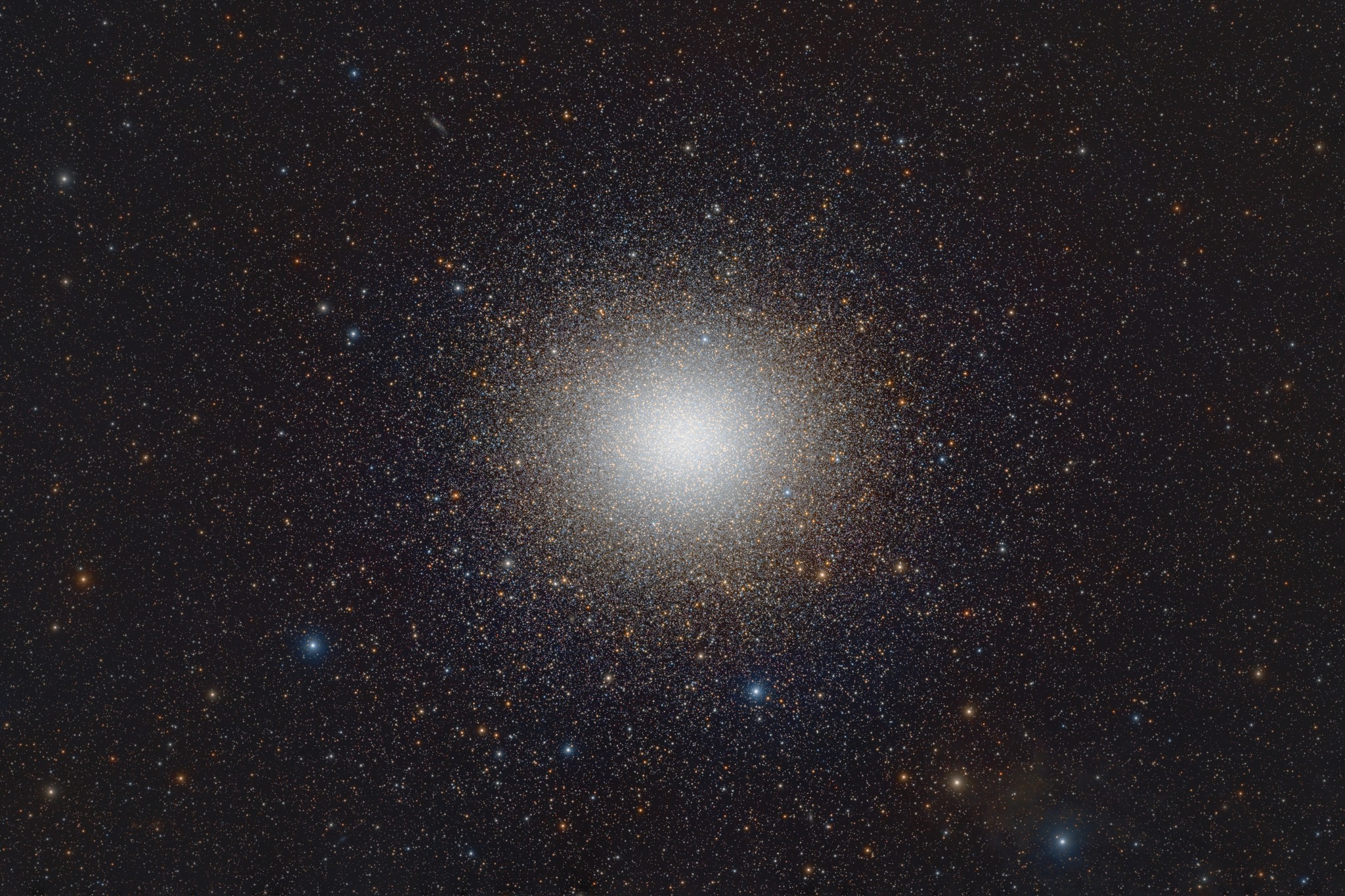Omega Centauri + Michael Kalika + L-QEF (L-Quad Enhance Filter)
Omega Centauri
Credit: Michael Kalika
Filters: L-QEF (L-Quad Enhance Filter)
Asimov once imagined a world where the stars were hidden and people saw them for the first time only when darkness finally fell. In "Nightfall", that moment changed everything.
Recently, we had a moment like that.
First light from our SkyFlux Team’s new remote rig in the southern hemisphere, now fully operational thanks to the generous hosting by Remote Astrophotography with Martin Pugh Astrophotography.
And what better target to begin with than Omega Centauri?
About 17,000 light-years away in the constellation Centaurus, Omega Centauri is the largest and brightest globular cluster in the Milky Way. It spans more than 150 light-years and contains roughly 10 million stars. Its core is so tightly packed that tens of thousands of suns crowd just a few light-years of space, forming a dazzling sphere of ancient starlight.
Under dark skies, it’s visible to the naked eye. A faint smudge to the casual observer, but for those who know what they’re looking at, it’s one of the great treasures of the southern sky.
What makes it truly fascinating is the mystery behind it. Omega Centauri may not be a regular globular cluster at all. It could be the shredded core of a long-lost dwarf galaxy, captured and consumed by the Milky Way billions of years ago. The wide spread of stellar ages and compositions supports this theory. It may be one of the last traces of a galactic ancestor, preserved in this tightly wound knot of stars.
In our image, you can see its brilliant core and the soft halo fading outward. Every star here is unimaginably old, carrying with it the memory of the galaxy’s early days.
Like in "Nightfall", the stars were always there. We just needed to build something to see them.
And this is just the beginning.
Data: SkyFlux Team @ Remote Astrophotography with Martin Pugh Astrophotography
Remote Observatory Location: Australia, Manton (NSW)
SkyFlux Team: Michael Kalika, Oleg Sh, Leo Shatz
Processing: Michael Kalika
Total integration time: 2.83 hours (unguided)
Tech details:
Optolong L-Quad: 34×300″
Overall, 2h 50′ of imaging time.
Equipment:
Scope: Sharpstar AL-140PH refractor
Mount: 10Micron GM1000 HPS
Imaging camera: ZWO ASI6200MC Pro
Focuser: PrimaLuceLab ESATTO 3.5" LP low profile robotic focuser
Hope you like it.





